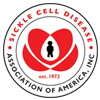Trusted Resources: Evidence & Education
Scientific literature and patient education texts
Prophylactic antibiotics for preventing pneumococcal infection in children with sickle cell disease
source: Cochrane Database of Systematic Reviews
year: 2017
authors: Rankine-Mullings AE, Owusu-Ofori S
summary/abstract:BACKGROUND:
Persons with sickle cell disease (SCD) are particularly susceptible to infection. Infants and very young children are especially vulnerable. The ‘Co-operative Study of Sickle Cell Disease’ observed an incidence rate for pneumococcal septicaemia of 10 per 100 person years in children under the age of three years. Vaccines, including customary pneumococcal vaccines, may be of limited use in this age group. Therefore, prophylactic penicillin regimens may be advisable for this population. This is an update of a Cochrane Review first published in 2002, and previously updated, most recently in 2014.
OBJECTIVES:
To assess the effects of antibiotic prophylaxis against pneumococcus in children with SCD in relation to:1. incidence of infection;2. mortality;3. drug-related adverse events (as reported in the included studies) to the individual and the community;4. the impact of discontinuing at various ages on incidence of infection and mortality.
MAIN RESULTS:
Five trials were identified by the searches, of which three trials (880 children randomised) met the inclusion criteria. All of the included trials showed a reduced incidence of infection in children with SCD (SS or Sβ0Thal) receiving prophylactic penicillin. In trials which investigated initiation of penicillin on risk of pneumococcal infection, the odds ratio was 0.37 (95% confidence interval 0.16 to 0.86) (two trials, 457 children) (low-quality evidence), while for withdrawal the odds ratio was 0.49 (95% confidence interval 0.09 to 2.71) (one trial, 400 children) (low-quality evidence). Adverse drug effects were rare and minor. Rates of pneumococcal infection were found to be relatively low in children over the age of five. Overall, the quality of the evidence for all outcomes was judged to be low. The results from the risk of bias assessment undertaken identified two domains in which the risk of bias was considered to be high, these were incomplete outcome data (attrition bias) (two trials) and allocation concealment (selection bias) (one trial). Domains considered to have a low risk of bias for all three trials were selective reporting (reporting bias) and blinding (performance and detection bias).
DOI: 10.1002/14651858.CD003427.pub4
read more full text
Related Content
-
Nutrition for the Child with Sickle Cell AnemiaSickle Cell Disease (SCD), also called S...
-
Clinical risks and healthcare utilization of hematopoietic cell transplantation for sickle cell disease in the USA u...Advances in allogeneic hematopoietic cel...
-
Isaac Singleton: Sickle Cell Freehttps://www.youtube.com/watch?v=a5mMgnuz...
-
FDA Approves First Targeted Therapy to Treat Patients with Painful Complication of Sickle Cell DiseaseToday, the U.S. Food and Drug Administra...
-
Sickle Cell Disease and Cold Weather: Dos and Don’tsIn the United States today, one of every...
-
SCDAA Masterclass Speaker Series: All Things Considered – SCD Treatment: A Personal ChoiceSCDAA's First Masterclass on the Cusp of...
-
Gene Therapy for Blood DisordersIn the context of intense scrutiny over ...
To improve your experience on this site, we use cookies. This includes cookies essential for the basic functioning of our website, cookies for analytics purposes, and cookies enabling us to personalize site content. By clicking on 'Accept' or any content on this site, you agree that cookies can be placed. You may adjust your browser's cookie settings to suit your preferences. More Information
The cookie settings on this website are set to "allow cookies" to give you the best browsing experience possible. If you continue to use this website without changing your cookie settings or you click "Accept" below then you are consenting to this.




 +myBinder
+myBinder
